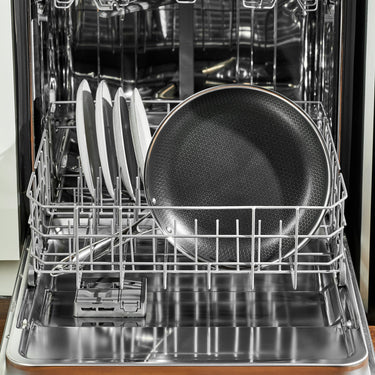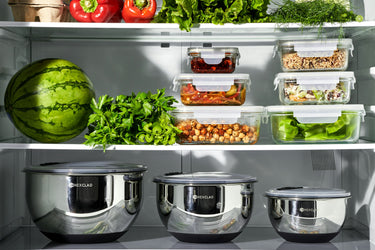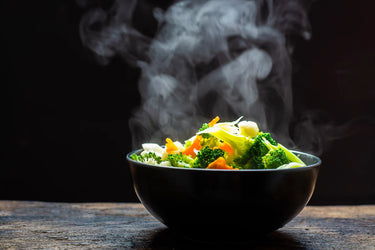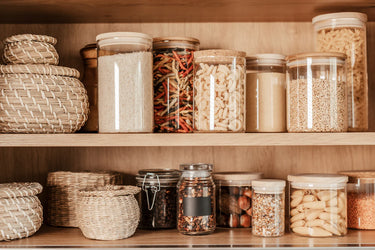How To Clean Non Stick Pans

Is there anything more annoying than having to wash the dishes after a delicious meal? Sadly, the pleasure of a delicious, home-cooked meal often exists in inverse proportion to the frustration of cleaning up. The good news is that HexClad pans are easier to wash than most—thanks to their nonstick coating—but no pans will wash themselves for you. (A cook can dream…)
Why is it important to clean a nonstick pan?
Obviously, you’re not in the habit of just frying up a few eggs and chucking the pan back in the cabinet. But is simply washing your pans between uses enough?
It turns out that there’s a correct way to clean a nonstick pan that will ensure it cooks your food the best way possible and maintains its nonstick surface. Neglecting to clean your nonstick pan thoroughly affects how you cook: Residual food or caked-on gunk will reduce the quality of what you cook, and mealtime cleanup will be harder if build-up develops. Not to mention, lack of adequate cleaning can make your meals unappetizing.
The Dos and Don'ts of Cleaning a Nonstick Pan
Follow these tips to make it easier to clean your nonstick pans without damaging them.
- Do: Season your pan before the first time you use it to make cleanup easier.
Seasoning your HexClad pan is only necessary the first time you cook with the pan or after a deep clean. This process helps avoid food crusting or sticking on the pan and makes it easier to clean.
Follow these simple steps to get your new HexClad pan in great shape before you begin cooking:
- Wash your nonstick pan with warm water, a gentle sponge, and dish soap. Dry well.
- Heat your pan over medium-low heat for about 30 seconds.
- Pour 1 teaspoon of neutral oil (like vegetable, avocado, or olive oil) into the pan and swirl to coat.
- Increase the heat to medium and continue to heat the pan for 1 to 2 minutes. Remove from the heat and let cool.
- Use a paper towel to wipe excess oil from the pan. If you’re planning to cook right away, proceed with the recipe. Otherwise, wipe well and store.
- Don’t: Stick the pan straight into the sink.
Let the pan cool completely on the stovetop before cleaning. If the pan is still hot and hits cold water, it can cause thermal shock, which can ruin your pan overtime..
- Do: Use hot, soapy water and a regular sponge to wash your HexClad pans.
Once the pan has cooled after cooking, the best bet for the longevity of your pans and removing any residue on the surface is hot, soapy water and a regular sponge. Because of the nonstick coating on HexClad pans, they should be relatively easy to clean.
- Don’t: Worry about using an abrasive sponge or steel wool on the surface of your HexClad pan. HexClad is a hybrid pan that’s metal utensil-safe, so you can go ahead and use steel wool on both the interior and exterior of the pan. However, If food is difficult to remove with hot soapy water and a soft sponge, you can use steel wool and good old-fashioned elbow grease. If thi fails, try creating a paste with baking soda and water. (A product like Bar Keepers friend works well, too.) Spread it over the hard-to-clean area and let sit for 30 minutes. Wipe the paste clean—the stuck-on bits should come with it. If you have a nonstick brand from another pan, follow their specifications when it comes to abrasive sponges or steel wool.
- Do: Put your nonstick HexClad pans in the dishwasher.
If there’s one appliance that has revolutionized the home kitchen, it might just be the dishwasher. Yes, HexClad and other nonstick pans are pretty easy to clean in the sink, but what’s even better is that you can put them in the dishwasher. Be aware that using a dishwasher may cause pots and pans to dull or blacken over time. Dishwasher detergents are increasingly phosphate-free, which may cause etching or pockmarks in the metal. All this said, if convenience matters most to you, the dishwasher is a great helper in cleaning your nonstick pans.
- Don’t: Assume that high heat is best.
HexClad pans do best over low to medium heat. High heat can cause oil to burn and cause build up on your pans. This can make the pans harder to clean.





